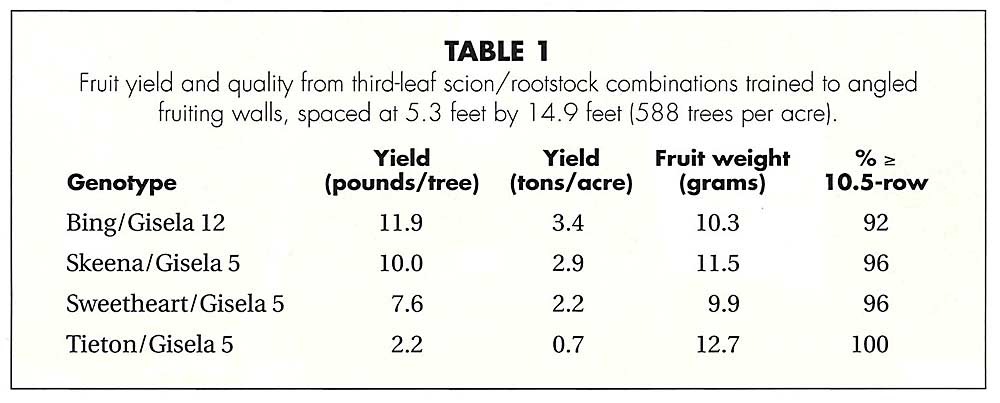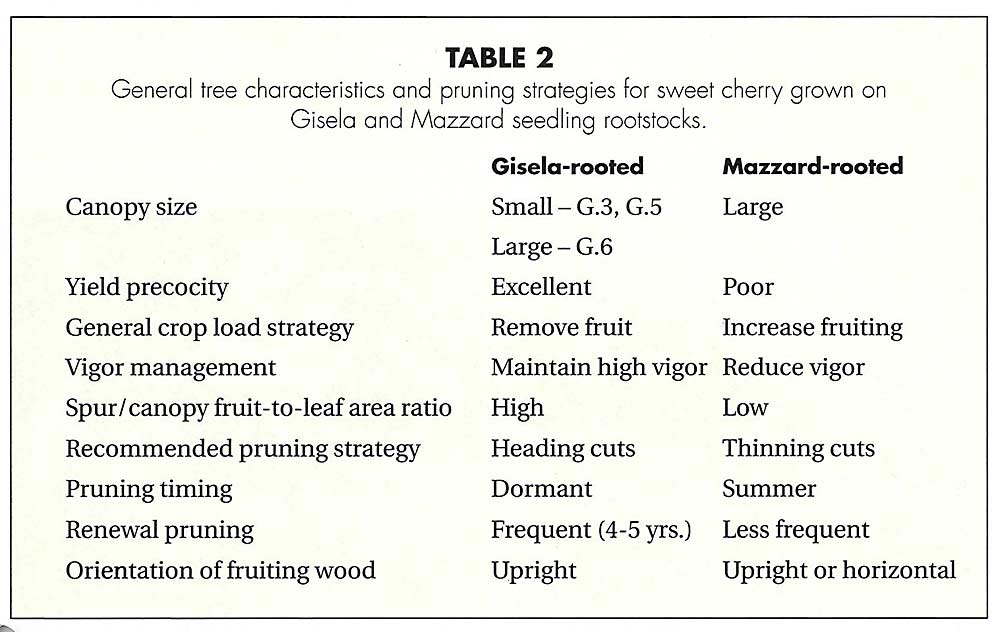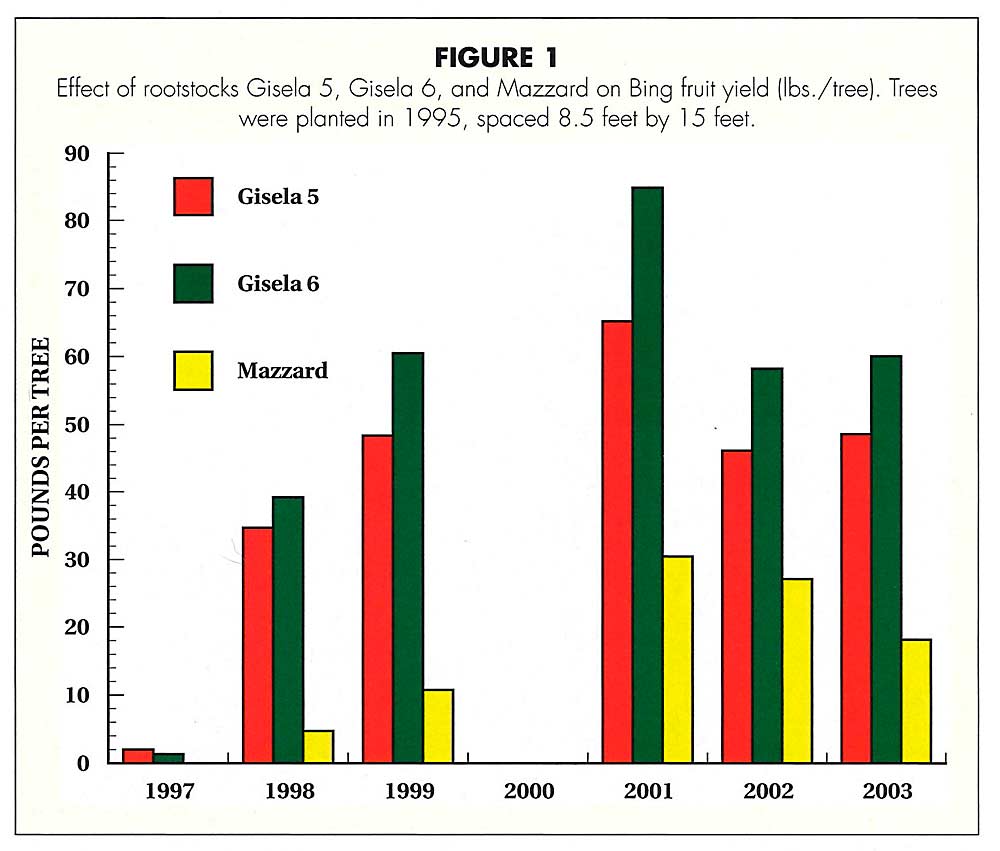The profitable sweet cherry orchard of the future will look very different from the aged Bing/Mazzard system that characterizes much of the current bearing acreage. To deal with the increasing cost and decreasing availability of labor, and increasing acreage and production, growers must develop and adopt new, more efficient orchard systems. At the same time, few disagree that, however the new systems are ultimately configured, they must yield a product that provides a wonderful eating experience (generally presumed to be a large, firm fruit). Important characteristics for any new sweet cherry orchard system include:
—Precocity
—Productivity
—Yield of high quality fruit
—efficient use of resources (labor, water, carbohydrates, etc.)
The sweet cherry research program at Washington State University’s Irrigated Agriculture Research and Extension Center in Prosser is actively pursuing these goals via genetics and breeding, physiological, and horticultural means. The remainder of this article will summarize briefly, related and ongoing areas of research. The Washington Tree Fruit Research Commission and the Oregon Sweet Cherry Commission provided significant financial support for these programs.
Productivity and precocity
Tree productivity and precocity are key components of orchard profitability and are affected by tree genotype, orchard environment, and management. There is tremendous variability among scion varieties in their productivity and precocity. Sweetheart is precocious and very productive; Tieton is much less so.
With the introduction of the Gisela series of rootstocks however, precocity and productivity can be induced and/or enhanced. Research at Prosser has clearly documented the benefits of the Gisela series rootstocks. For example, over the first seven years, Bing on Gisela 6 trees were slightly more productive than Bing on Gisela 5, but both Gisela-rooted combinations were two to almost seven times more productive than Bing on Mazzard trees depending on the year (see Figure 1).

The economic benefits of such precocity and productivity are well documented and compelling, despite the higher cost of Gisela trees. Moreover, estimated crop value in terms of dollars per tree was higher from Gisela-rooted trees compared to those on Mazzard—dispelling the fallacy that good quality fruit cannot be grown on precocious, dwarfing rootstocks.
Clearly, the next generation sweet cherry orchard can and must yield high quality fruit on a precocious, productive, dwarfing rootstock. The relative importance of these three key characteristics is debatable, but control of scion vigor will be critical for improving labor efficiencies.
Efficient use of resources
Labor is the most costly resource utilized in sweet cherry orchards. It is relied heavily upon during planting, pruning, and harvest and is becoming more expensive and less available. Therefore, beyond precocity and productivity, the cherry research program at WSU includes in its vision for the future, novel orchard architectures designed to facilitate access to mechanical harvest, platform-assisted operations, and future automation and sensor technologies.
From experience in WSU research orchards, those of grower cooperators, and discussions at Tree Fruit Technology Roadmap meetings, a clear direction for cherry tree architecture has evolved. It is one based upon single-plane fruiting walls composed of repeated, upright “management units.” This orchard architecture promotes uniformity, facilitates training and pruning, takes advantage of sweet cherry growth habits, and is well suited to incorporate mechanical harvest and platform-assisted operations. Data from third-leaf trees shows great potential for this system (see Table 1). Bing on Gisela 12 trees were the most productive in this project, yielding about 3.5 tons per acre of 10.5-row and larger fruit.

Fruit quality
There is a close, negative relationship between fruit yield and fruit quality. This exists because the ability and capacity for any tree to produce carbohydrate resources for growth is limited, and most growth—both vegetative and fruit—occurs concomitantly in a very short interval. Therefore, competition for resources exists among all actively growing tissues, such as fruit vs. shoots and fruit vs. fruit.
Fruit quality is reduced when demand for carbohydrates exceeds supply, and the extent of the reduction is proportional to the degree of competition.
Therefore, with no grower intervention for crop load management, fruit size is generally larger on a vigorous, seedling rootstock like Mazzard, which has a large canopy, with relatively few fruit, compared to a precocious, productive, and dwarfing rootstock like Gisela 5 with a small canopy and many fruit.
Growth and cropping habits induced by these two rootstock types are nearly opposite and so too are general pruning and crop load management recommendations (see Table 2). It has been shown repeatedly that fruit quality on Gisela-rooted trees can be excellent when rootstock-specific strategies for balancing crop load are utilized.

Research at WSU has investigated and shown promise for several distinct crop load management strategies, including modified pruning, gibberellic acid to reduce floral bud density, spur thinning, chemical blossom thinning, and chemical postbloom thinning. At this stage, double applications at around 20% and 80% full bloom of 2% fish oil combined with 2.5% lime sulfur or ammonium thiosulfate at 2% concentration are recommended where thinning of about one-third to one-half of the natural crop load is required. The risk of overthinning is problematic and significant for the vast majority of sweet cherry growers who do not hand-thin the crop. In 2005, the fish oil combination showed potential as a postbloom thinning agent. The obvious advantage of postbloom thinning is having the opportunity to better assess fruiting density and need for fruit removal.
Significant reductions in fruit set have been reported with an application of the fish oil-lime sulfur combination 14 days after full bloom. Importantly, by various means, excellent quality fruit can be grown on the precocious, productive, and dwarfing rootstocks that will be critical to the success of the next generation sweet cherry orchard.

Leave A Comment